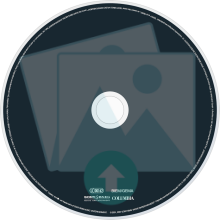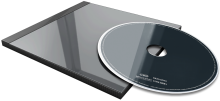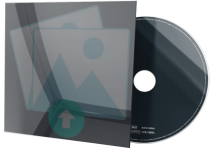
Cover NOT yet available in
Join up for 4K upload/download access
Your Rating (Click a star below)
![]()
![]()
![]()
![]()
![]()
![]()
![]()
![]()
![]()
![]()
Track List
01) Do Matter
02) Dilatone
03) CLOCK
04) The Bee
05) Melifer
06) Baby Step Giant Step
07) Yu Mountain
08) Lambswood
09) Saladore
10) Reeling Spiders
11) Held
12) Wen
01) Do Matter
02) Dilatone
03) CLOCK
04) The Bee
05) Melifer
06) Baby Step Giant Step
07) Yu Mountain
08) Lambswood
09) Saladore
10) Reeling Spiders
11) Held
12) Wen
3:40
3:40
4:24
2:50
4:05
4:14
4:04
4:10
3:51
3:23
3:46
2:41
Data Complete 50%
Total Rating
Total Rating
![]() (1 users)
(1 users)
Back Cover![]()
CD Art
3D Case
3D Thumb
3D Flat
3D Face
3D Spine
First Released
![]() 2016
2016
![]() Electronic
Electronic
![]() ---
---
![]() Electronic
Electronic
![]() ---
---
![]() Medium
Medium
![]() Album
Album
![]() 0 copies
0 copies
Album Description 
Click yellow EDIT Button add one in English or another language

User Album Review
https://www.google.com/amp/s/pitchfork.com/reviews/albums/21967-the-digging-remedy/amp/
Warp Records mainstays Plaid have staked out a well-defined territory over two decades: They make highly listenable melodic IDM, warm and playful. Their latest album doesn't rip up the blueprint.
As hard as it is to believe that Warp Records mainstays Plaid have been making experimental electronic music now for over twenty-five years, it’s even harder to believe that they’ve managed to do without markedly adjusting their basic formula for success. Plaid have sstaked out a well-defined musical territory for themselves by choosing on each new record to continually mine their existing plot of land rather than explore new terrain elsewhere. Their latest album, the appropriately named The Digging Remedy, reiterates that the Plaid game plan remains intact.
Luckily for Plaid, their game plan has usually been a pretty good one. Their music is a unique strain of listenable, hyper-melodic experimental electronic music that fits the frequently maligned tag “Intelligent Dance Music” all while sounding truly like no one else. They’ve also never made a truly bad album, which isn’t easy to say for a band who’ve been together that long, both in their current incarnation as Plaid and in the past life as the Black Dog with Ken Downie (anywhere from 10 to 15 records depending on how you’re counting). If nothing else, the Plaid blueprint is strong, unique and reliable.
The Plaid coming to us now on The Digging Remedy is in a sort of fourth stage: from the early Black Dog years running from ‘91-‘95; to the first Warp trifecta golden era of ‘95-02; to the experiments and soundtracks of ‘03-'12; and finally in 2014, they hit a wizened, back-to-basics phase. 2014’s Reachy Prints returned to the warm tones and friendly melodies that had worked so well for them over the previous twenty years. Now, two years later, The Digging Remedy picks up where its predecessor left off.
One tradition that The Digging Remedy also carries on is the somewhat odd placement of an album opener that is distinct (and often superior) from anything else on its accompanying record. 2001’s Double Figure opener “Eyen,” with it’s fade-in intro, circular acoustic guitar arpeggio and coo-ing choral vocals sounded beautiful and stands out from the rest of the album. The first two minutes of “Even Spring” from 2003’s Spokes, featuring Leila-collaborator Luca Santucci’s ghostly vocals, sounded even further away (before returning to “standard Plaid” mid-song). And Scintilli’s delightfully exquisite “missing” is perhaps the most unique track in their catalog, incorporating vocals not for lyricism but as a new instrument. On The Digging Remedy, lead track “Do Matter” lays down a tone of ominous, reflective menace that feels like a perfect development for the band: after years of playfulness and warmth, the idea of imagining a darkwave Plaid record that turns that warmth into nightmare feels like a potential home run.
Alas, that dream is not to be, as second track “Dilatone” drags the mood back to familiar territory. The jarring transition from “Do Matter” to “Dilatone,” a slight track that spins in tiny circles while going nowhere, represents one of The Digging Remedy’s biggest weak spots. Though the album reaches greater heights than its predecessor Reachy Prints with a number of excellent compositions (“Do Matter,” “Clock,” “Melifer,” “Yu Mountain,” “Saladore”), the sequencing of everything just feels a bit off, in a way that seems uncharacteristic. Too often, the momentum of a great track is followed by the slow thud of something both different and lesser. The deliberate build and pitter-patter Knight Rider paranoia of “Saladore”—the closest thing to “Do Matter”’s ghoulishness—is wonderful, but to have it wind down into the bass drum circus thump of “Reeling Birds” feels like bit of a let down.
The good news about The Digging Remedy is that it’s lovely and listenable for any longtime followers, or for anyone remotely interested in the kind of melodic IDM defined by this piece. However, it is neither an exciting deviation nor a refinement; as such, it’s really just more of an already-good thing, albeit packaged less delicately. Few artists can say that twenty-five years in they are still able to put out quality records. But here’s to hoping that next time around Plaid might consider stepping off their lawn to chase that darkwave dream.
External Album Reviews
None...
User Comments


Click yellow EDIT Button add one in English or another language
User Album Review
https://www.google.com/amp/s/pitchfork.com/reviews/albums/21967-the-digging-remedy/amp/
Warp Records mainstays Plaid have staked out a well-defined territory over two decades: They make highly listenable melodic IDM, warm and playful. Their latest album doesn't rip up the blueprint.
As hard as it is to believe that Warp Records mainstays Plaid have been making experimental electronic music now for over twenty-five years, it’s even harder to believe that they’ve managed to do without markedly adjusting their basic formula for success. Plaid have sstaked out a well-defined musical territory for themselves by choosing on each new record to continually mine their existing plot of land rather than explore new terrain elsewhere. Their latest album, the appropriately named The Digging Remedy, reiterates that the Plaid game plan remains intact.
Luckily for Plaid, their game plan has usually been a pretty good one. Their music is a unique strain of listenable, hyper-melodic experimental electronic music that fits the frequently maligned tag “Intelligent Dance Music” all while sounding truly like no one else. They’ve also never made a truly bad album, which isn’t easy to say for a band who’ve been together that long, both in their current incarnation as Plaid and in the past life as the Black Dog with Ken Downie (anywhere from 10 to 15 records depending on how you’re counting). If nothing else, the Plaid blueprint is strong, unique and reliable.
The Plaid coming to us now on The Digging Remedy is in a sort of fourth stage: from the early Black Dog years running from ‘91-‘95; to the first Warp trifecta golden era of ‘95-02; to the experiments and soundtracks of ‘03-'12; and finally in 2014, they hit a wizened, back-to-basics phase. 2014’s Reachy Prints returned to the warm tones and friendly melodies that had worked so well for them over the previous twenty years. Now, two years later, The Digging Remedy picks up where its predecessor left off.
One tradition that The Digging Remedy also carries on is the somewhat odd placement of an album opener that is distinct (and often superior) from anything else on its accompanying record. 2001’s Double Figure opener “Eyen,” with it’s fade-in intro, circular acoustic guitar arpeggio and coo-ing choral vocals sounded beautiful and stands out from the rest of the album. The first two minutes of “Even Spring” from 2003’s Spokes, featuring Leila-collaborator Luca Santucci’s ghostly vocals, sounded even further away (before returning to “standard Plaid” mid-song). And Scintilli’s delightfully exquisite “missing” is perhaps the most unique track in their catalog, incorporating vocals not for lyricism but as a new instrument. On The Digging Remedy, lead track “Do Matter” lays down a tone of ominous, reflective menace that feels like a perfect development for the band: after years of playfulness and warmth, the idea of imagining a darkwave Plaid record that turns that warmth into nightmare feels like a potential home run.
Alas, that dream is not to be, as second track “Dilatone” drags the mood back to familiar territory. The jarring transition from “Do Matter” to “Dilatone,” a slight track that spins in tiny circles while going nowhere, represents one of The Digging Remedy’s biggest weak spots. Though the album reaches greater heights than its predecessor Reachy Prints with a number of excellent compositions (“Do Matter,” “Clock,” “Melifer,” “Yu Mountain,” “Saladore”), the sequencing of everything just feels a bit off, in a way that seems uncharacteristic. Too often, the momentum of a great track is followed by the slow thud of something both different and lesser. The deliberate build and pitter-patter Knight Rider paranoia of “Saladore”—the closest thing to “Do Matter”’s ghoulishness—is wonderful, but to have it wind down into the bass drum circus thump of “Reeling Birds” feels like bit of a let down.
The good news about The Digging Remedy is that it’s lovely and listenable for any longtime followers, or for anyone remotely interested in the kind of melodic IDM defined by this piece. However, it is neither an exciting deviation nor a refinement; as such, it’s really just more of an already-good thing, albeit packaged less delicately. Few artists can say that twenty-five years in they are still able to put out quality records. But here’s to hoping that next time around Plaid might consider stepping off their lawn to chase that darkwave dream.
External Album Reviews
None...
User Comments

No comments yet...
